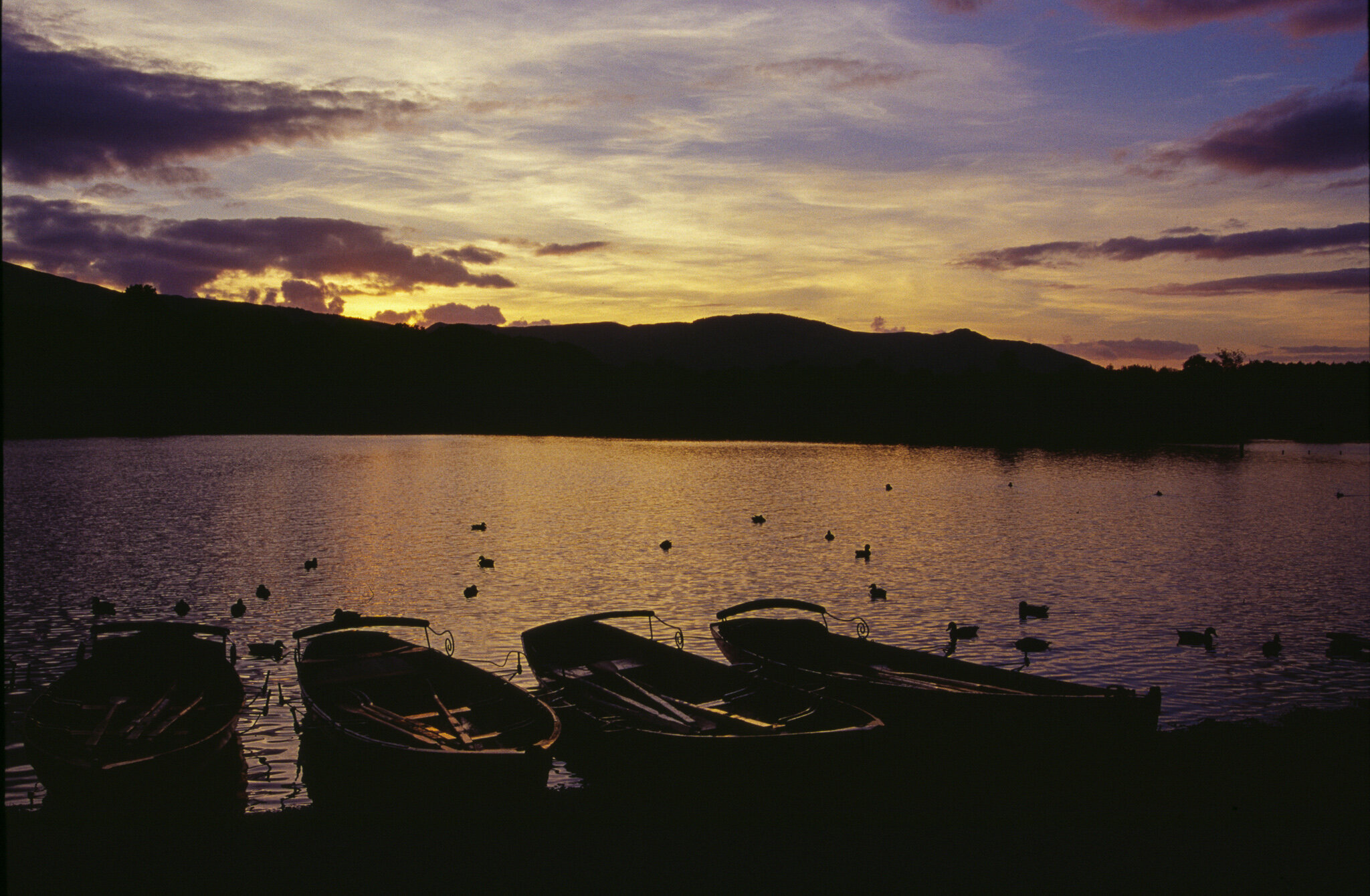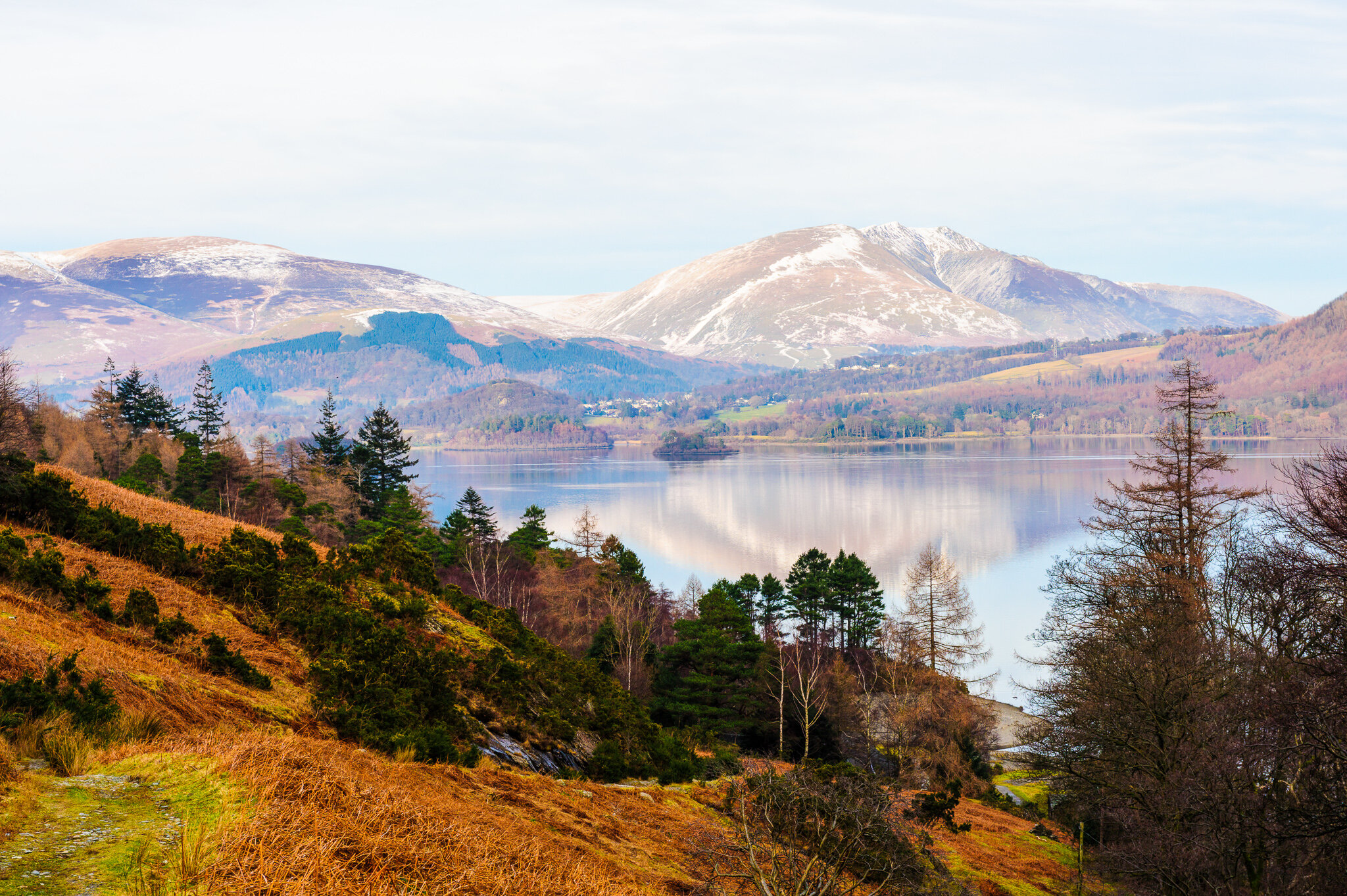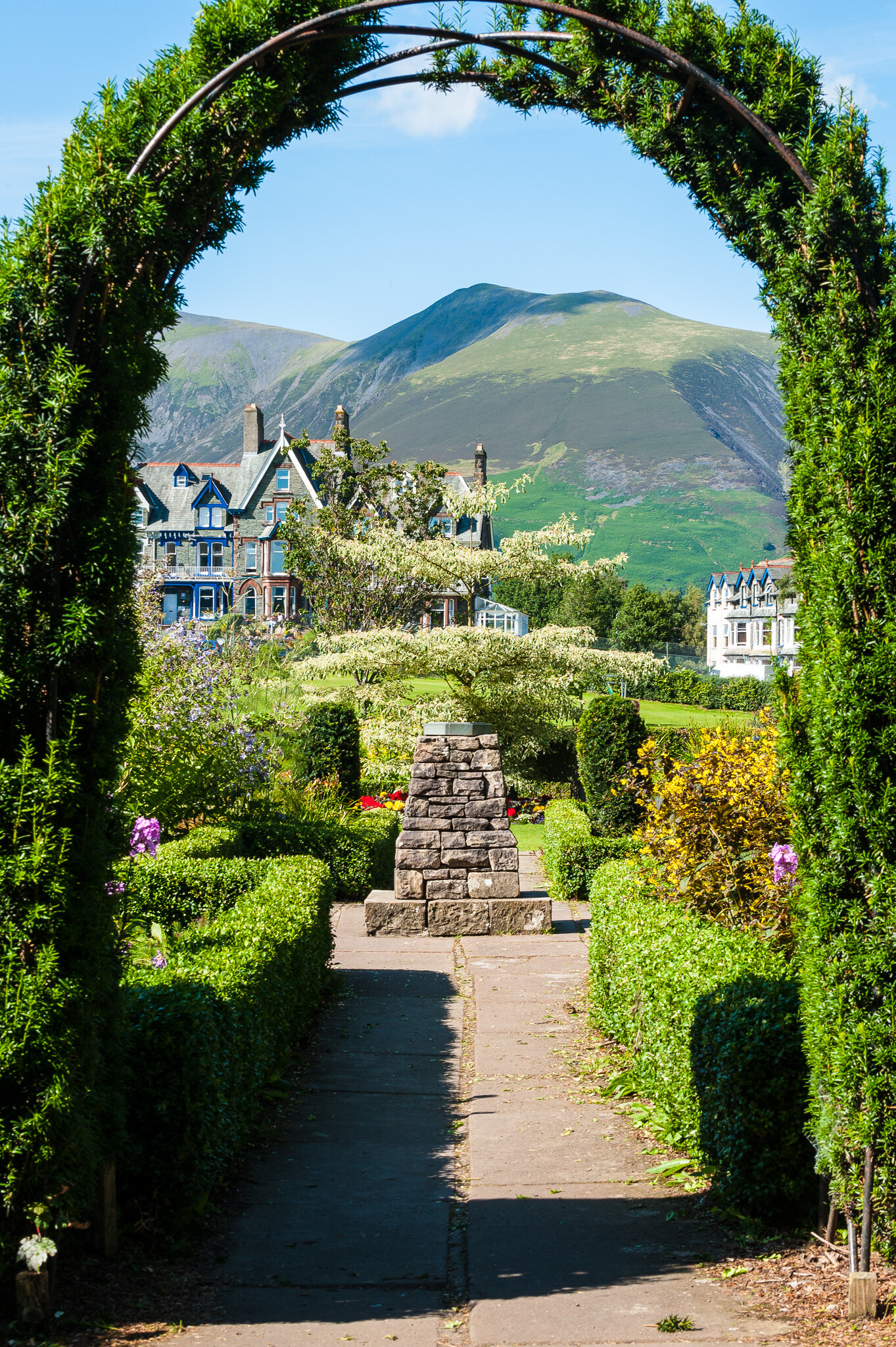Derwentwater
Derwentwater is hailed as 'Queen of the Lakes', and is surrounded by some of the most magnificent scenery in the Lake District.
The lake is three miles long by one and a quarter miles wide and is the third largest of the Cumbrian lakes. Derwentwater is a shallow lake, it is only seventy five feet deep at its deepest point, but its average depth is only fifteen feet. This is mainly due to the large quantity of silt washed down into it by seasonal floods. Its shallowness also makes it the first lake to freeze over in the winter.
Derwentwater’s name comes from “River with oak trees'. The river gave its name to Derwent Water or Derwentwater (which was also known as the 'Lake of Derwent' in the 18th-19th centuries).
The famous beauty spot of Friars Crag is a short walk from the boat landings near to the main lakeside carpark. The crag derives its name from the pilgrims who once embarked from there to visit St.Herbert's Island. This is one of the most famous beauty spots in the whole of the Lake District, the view across Derwentwater towards Catbells fell is truly breathtaking.
Rowing boats on the shore of Derwentwater at Keswick overlooking the sunset behind Catbells
There are several islands within the lake:
Derwentwater has four islands Derwent, Lord's, Rampsholme and St. Herbert's. Only one, Derwent Island, is inhabited. Derwent Island was once owned by the monks of Fountains Abbey and was once the home of German miners working in the area. Derwent Island House, an 18th-century residence, is a now a tenanted National Trust building that is open to the public on five days each year.
St. Herbert's, at the centre of the lake, is the largest of the islands which covers 4- 5 acres. The island was named after the saint of the same name who brought christianity to the area in 685 and used it as a hermitage.
Lord's Island was once the residence of the Earls of Derwentwater who built a grand house on the island, dating from around 1460, with a drawbridge across to the mainland. The foundations of the house can still be seen on the island.
Rampsholme derives from the Old Norse Hrafns holmr or 'wild garlic island'.
The main B5289 Keswick to Borrowdale road runs along the eastern shore of the lake providing a number of accessible locations to reach the lake shore. Just after the turn off for Ashness Bridge and Watendlath there is a small National Trust car park at Kettlewell. This car park provides access to the southern shore of the lake and gives fantastic views over Derwentwater towards the Skiddaw mountain range.
Derwentwater from Kettlewell car park with snow covered Skiddaw in the background
From Kettlewell car park a 20 minute walk along the road past the Lodore Falls hotel will bring you to the Chinese Bridge. Cross the bridge and follow the recycled plastic boardwalk path around Great Bay to the woods. A short section of tarmac path takes you to the oak woodlands at Brandlehow and, from there, a smooth crushed stone path leads along the western shore of the lake to Victoria Bay and Hawse End. The path is flat and easily navigated by wheelchairs and pushchairs and there are a number of picnic tables along the route should you need a break. The route provides some opportunities for stunning lakeside views across Derwentwater towards Walla Crag and Bleaberry Fell.
Further along the Borrowdale road you reach a turning for Grange. Crossing the bridge over the River Derwent there is an unclassified road that takes you across the lower slopes of Catbells along the western shore of the lake towards the village of Portinscale. This road has narrow sections with passing places but there are places where you can park the car for an elevated view across Derwentwater towards Skiddaw.
Derwentwater from Catbells on the unclassified road between Grange and Portinscale
Skiddaw framed by a green arch in Hope Park gardens, Keswick
Hope Park Gardens is one of Keswick's main attractions. Located between the town centre and Derwentwater, near to the lake car park, the park is a favourite stopping off place whilst walking to the lake.
Hope Park has attractive landscaped gardens with a stream and woodland walk, set in magnificent scenery overlooking the fells and provides opportunities to frame the hills in one of a number of arches in the grounds.
Getting There:
Keswick is located just off the main A66 route between Junction 40 of the M6 and West Cumbria. From Keswick head for the Lake car park signposted from the entry to the town centre. This large car park provides easy access to the shores of Derwentwater and the boat launch jetties.
For alternative locations, leave the car park and follow the B5289 Borrowdale Road along the shore of the lake. Not long after the turning for Ashness Bridge you come across Kettlewell car park on the lake side of the road.
Leave the carpark and continue along the Borrowdale road and you will come to a bridge on the right, signposted for Grange. Cross the bridge and follow the road around the lower slopes of Catbells to get views from the western shores. The road returns to the A66 and back to Keswick.
Friars Crag Grid Ref: NY 263 222
Kettlewell Car Park Grid Ref: NY 267 294




